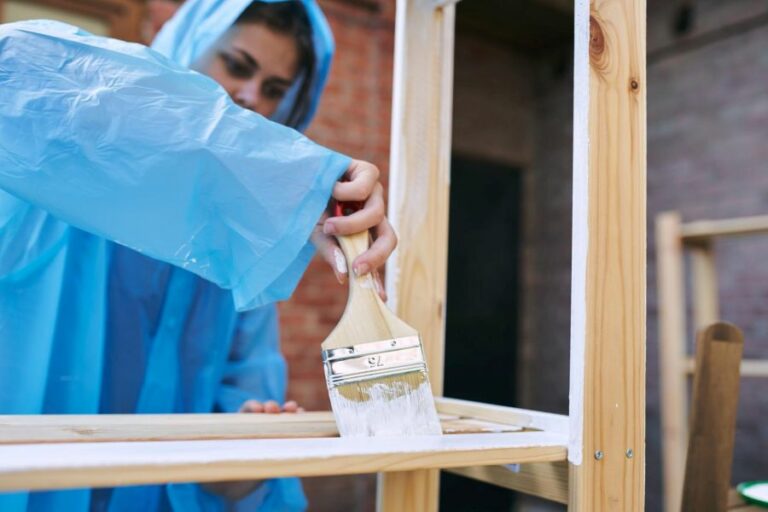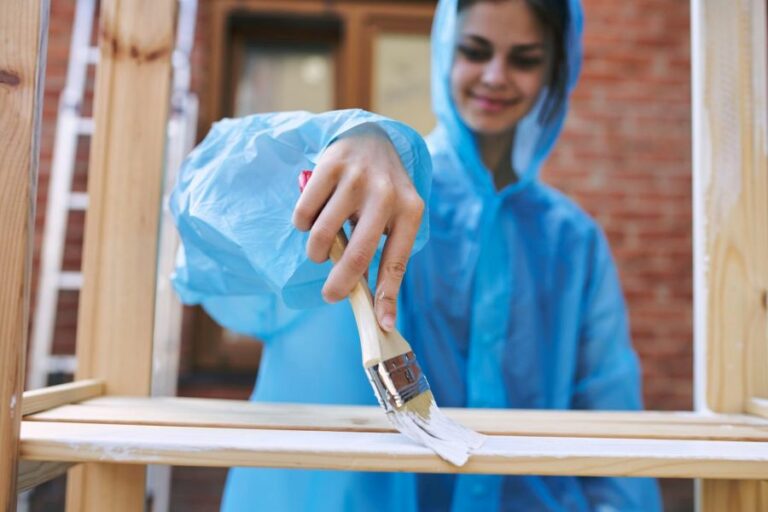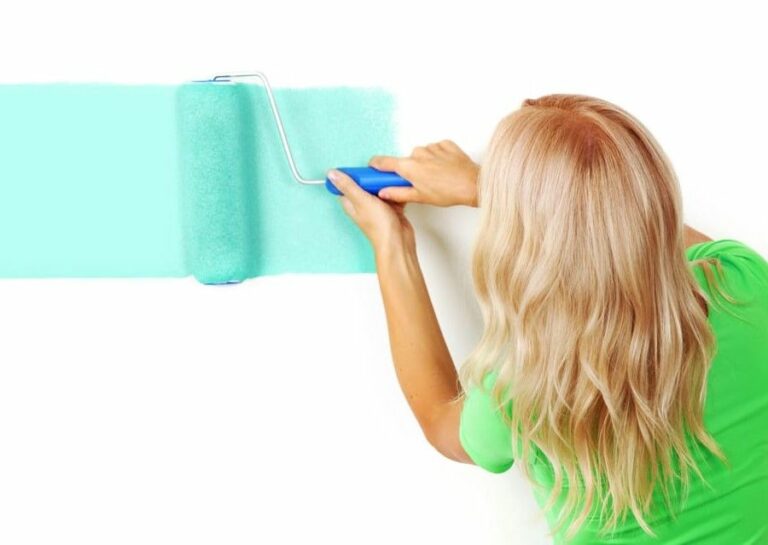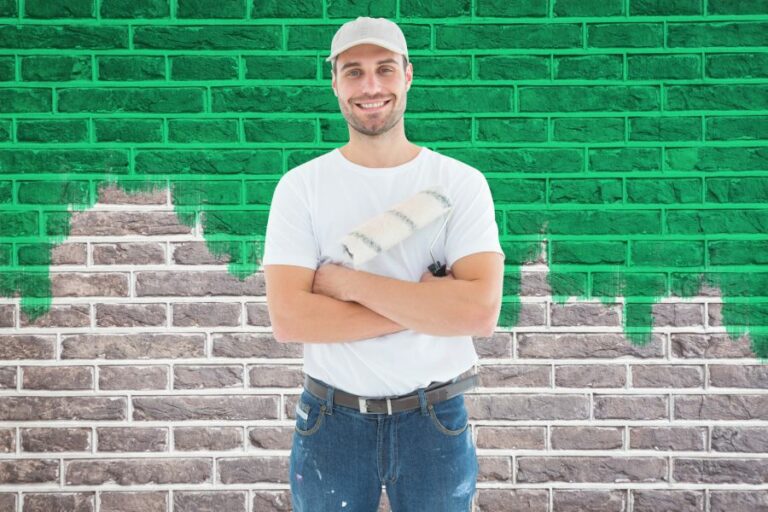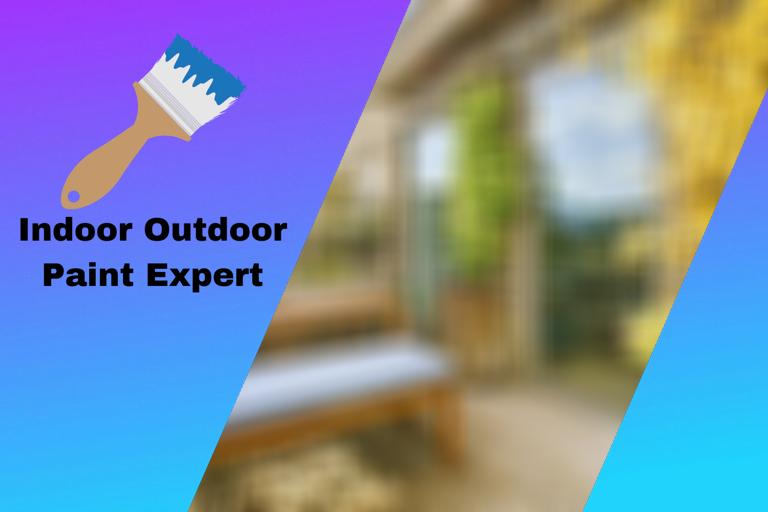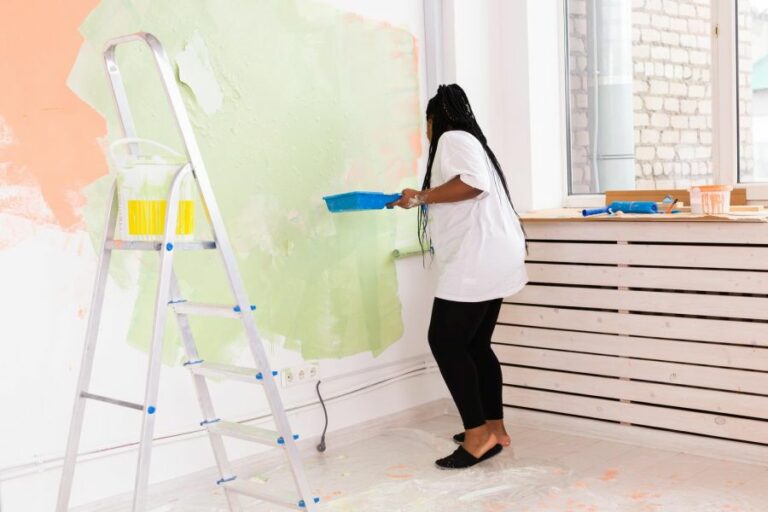Transform Your Outdoor Space with Chalk Paint, what pros say
Looking for a creative, fun, and engaging way to spend time outdoors with your family? Look no further! ‘Outdoor Chalk Paint’ is a fabulous art activity that’ll transform your backyard, sidewalks, or driveway into colorful masterpieces for everyone to enjoy. Keep reading to learn how to make this easy, DIY chalk paint that’s safe for all ages and environmentally friendly. Discover various techniques and ideas to spark your imagination and make the most memorable artwork to be proud of.
Outdoor chalk paint:
Outdoor chalk paint is a non-toxic, environmentally friendly, and versatile medium suitable for various surfaces, promoting creativity and outdoor play for kids and adults. Easy to make at home with cornstarch, water, and food coloring, it can be used for murals, obstacle courses, special occasions, and educational activities.
To achieve the best results with this washable paint, test a small area first, use appropriate tools, apply multiple coats for stronger colors, and be prepared for a messy yet fun experience.

Unleash your inner artist with outdoor chalk paint! This versatile medium allows for endless creativity on multiple surfaces. Discover how simple it is to mix, apply, and enjoy. For all ages, transform your outdoor space into a colorful canvas.
Contents
- 1 Exterior Chalk-Based Paint
- 2 Is Chalk Paint Suitable for Outdoor Use?
- 3 What materials can be applied to chalk paint to enhance its water resistance?
- 4 What is the Method for Creating Exterior Chalk Paint?
- 5 Is Chalk Paint Capable of Withstanding Rain?
Exterior Chalk-Based Paint
Outdoor chalk paint is a versatile and fun medium that can turn your boring driveway or garden wall into a colorful masterpiece. This paint type is perfect for kids and adults looking for a new way to express themselves outside.
In this comprehensive guide, I will discuss everything you need to know about outdoor chalk paint, including its benefits, how to make it, simple yet creative projects you can undertake, and important tips for using this art material.
• Benefits of Outdoor Chalk Paint
There are several advantages to using outdoor chalk paint, some of which include the following:
- Non-toxic and environmentally friendly: Most outdoor chalk paints are made from natural ingredients, making them safe for you, your kids, and your pets. They are also environmentally friendly, causing no harm to your plants or other surfaces.
- Easy to apply and clean: Outdoor chalk paint is simple to apply using brushes, sponges, or even fingers. Best of all, it washes off easily with water – no harsh chemicals necessary.
- Versatile and multi-surface: You can use outdoor chalk paint on various surfaces, including pavement, bricks, cement, wooden fences, and more. This makes it perfect for transforming your garden, patio, or driveway into your personal canvas.
- Promotes creativity and outdoor play: Outdoor chalk paint encourages kids and adults to spend more time outside while unleashing their artistic skills. It’s a great way to create beautiful memories with family and friends.
• How to Make Your Own Outdoor Chalk Paint
Outdoor chalk paint is easy to make at home. Here is a quick and simple recipe to create your outdoor chalk paint using just a few household ingredients:
– Ingredients:
- 1 cup of cornstarch
- 1 cup of water
- Food coloring or washable tempera paint
– Instructions:
- In a large bowl, mix the cornstarch and water until smooth.
- Separate the mixture evenly into smaller bowls, one for each color you plan to create.
- Add a few drops of food coloring or a spoonful of washable tempera paint to each bowl and mix well.
- Your outdoor chalk paint is ready to use! Store it in airtight containers or jars for easy access and to keep it from drying out.
• Creative Projects with Outdoor Chalk Paint
Now that you have your outdoor chalk paint, here are some fun and creative projects to try:
– Paint a Mural
Transform a blank wall or fence in your outdoor space into a stunning piece of art by painting a mural. Sketch out your design using a piece of chalk, or let your creativity flow as you go. This is a perfect project for the entire family to participate in.
– Design a Colorful Obstacle Course
Create a fun and creative obstacle course using outdoor chalk paint; paint lines, shapes, and patterns on your driveway, patio, or other flat surfaces for participants to navigate.
You can even design challenges by painting targets for bean bag tosses, hopscotch grids or numbered zones for scoring points during games.
– Celebrate Special Occasions
Use outdoor chalk paint to create personalized decorations and messages for your celebrations, whether it’s a birthday, anniversary, or baby shower. Paint banners, signs, or even directional arrows to help guide guests through your event.
– Educational Activities
Outdoor chalk paint is an excellent tool for teaching your kids math, spelling, or science. Write equations or words for them to complete or create colorful diagrams to help explain complex concepts.
• Tips for Using Outdoor Chalk Paint
To get the best results from your outdoor chalk paint, keep these helpful tips in mind:
- Always test a small area first: Before painting a large surface or area, test the outdoor chalk paint on a small, inconspicuous spot to ensure the paint washes off easily and doesn’t stain. This is especially important if using homemade paint.
- Use the right tools: Depending on the project, you may need various brushes, sponges, or stencils. The right tools will make your painting experience more enjoyable and give you better results.
- Apply multiple coats for stronger colors: If you want a more vivid color, apply multiple thin coats of chalk paint, allowing each layer to dry before applying the next. This will help create a bolder and more even finish.
- Be prepared for a messy but fun experience: While outdoor chalk paint is washable, it can still be messy, especially when working with kids. Wear old clothes and keep towels or wet wipes handy for easy clean-up.
Outdoor chalk paint is a fantastic and delightful way to bring color and creativity to your outdoor spaces. From murals to educational activities, there’s a project for everyone to enjoy. Give outdoor chalk paint a try and start exploring its endless possibilities.
Is Chalk Paint Suitable for Outdoor Use?
The popularity of chalk paint has skyrocketed in recent years thanks to its incredible versatility, ease of use, and unique, antique appearance that it imparts on furniture and decorative pieces. However, when it comes to outdoor use, many wonder if chalk paint is suitable.
I will discuss the suitability of chalk paint for outdoor use and offer expert recommendations on using this incredible decorative material best.
• Chalk Paint Characteristics
Chalk paint is a decorative paint that originated in 1990 through the creative genius of Annie Sloan. It is specially designed for painting furniture, offering a matte finish that immediately attracts attention. Chalk paint possesses several distinctive features, including:
- Requires minimal to no prepping due to its ability to adhere to numerous surfaces
- Quick drying
- Thick consistency, enabling fewer coats
- Easy to distress, giving the furniture a vintage appearance
Despite its many benefits, it is crucial to recognize that the composition of chalk paint makes it porous. This means it is susceptible to moisture absorption, which is unavoidable in outdoor use.
• Can Chalk Paint Be Used Outdoors?
The simple answer to this question is yes; chalk paint can be used outdoors. However, it becomes essential to take several precautionary measures to ensure the durability and longevity of the painted surface.
For you to make the most out of your outdoor chalk paint projects, a few essential steps and considerations are highlighted below:
– Surface Preparation
Although chalk paint is known for its ability to stick to almost any surface without extensive preparation, outdoor use necessitates a slightly different approach. Before applying chalk paint, ensure the surface is thoroughly cleaned and free of dirt, grease, and other contaminants.
If the furniture or object you plan to paint has cracks or fissures, fill these with wood filler or a similar product.
– Paint Application
When applying chalk paint outdoors, the process remains relatively similar to indoor use. Apply the paint using a suitable brush, and take your time to ensure an even distribution of the paint on the surface.
It is essential to wait for the chalk paint to dry completely before attempting to apply additional coats, which usually takes approximately 30 minutes to an hour, depending on the size of the piece and the environmental conditions.
– Sealant or Topcoat
Arguably the most crucial step when using chalk paint outdoors is to seal the painted surface with a suitable, weather-resistant sealant or topcoat. Since chalk paint is porous, protecting the painted surface from moisture, UV rays, and other outdoor elements is vital.
Several topcoats and sealants are on the market specifically designed for outdoor chalk paint projects. Some popular options include:
- Wax: A traditional chalk paint sealant available in clear and dark versions. However, the wax may not be the best option for outdoor use due to its reduced durability compared to other sealants.
- Clear polyurethane: This topcoat is available in matte and glossy finishes. It offers excellent protection against moisture and UV rays. Ensure that the polyurethane is water-based to avoid yellowing over time.
- Outdoor sealants: Several companies produce sealants explicitly formulated for protecting chalk paint surfaces outdoors. Consult your local hardware store or search online for a suitable outdoor chalk paint sealant.
– Maintenance and Care
Once your outdoor chalk paint project is complete and protected with a suitable topcoat, it is essential to maintain and care for the painted surface to ensure its longevity. Regularly clean the surface with a mild soap solution and water, taking care not to saturate the paint.
If the protectant or paint starts to wear or chip, be prepared to reapply the paint and topcoat as needed.
• Final Thoughts
Chalk paint is a versatile and creative option for adding a touch of personality to your outdoor furniture and decorations. However, it is crucial to properly prepare, protect, and maintain your outdoor chalk paint projects to ensure their durability, longevity, and resistance to outdoor elements.
By following these expert recommendations, you can confidently undertake your outdoor chalk paint projects and achieve stunning results that will withstand the tests of time and weather.
What materials can be applied to chalk paint to enhance its water resistance?
Chalk paint is an incredibly versatile medium that offers excellent adhesion, a beautiful matte finish, and the ability to create a distressed or aged appearance on furniture, walls, and other surfaces. However, one of the drawbacks of using chalk paint is that it lacks resistance to water and other liquid spills.
This can be a problem, especially with surfaces prone to spills or moisture-heavy environments such as kitchens and bathrooms. We will explore several options to make your chalk paint surface waterproof (or at least water-resistant), ensuring its longevity and durability.
• Top Picks: Products for Waterproofing Chalk Painted Surfaces
– Wax
Wax is one of the most popular methods to waterproof chalk paint. Applying a layer of wax seals the surface and provides a barrier that protects against moisture and spills. Several types of waxes are available, with both clear and tinted options to enhance or alter the appearance of your chalk paint finish.
Recommended Product: Annie Sloan Soft Wax or Minwax Paste Finishing Wax
Application Tips:
- Use a clean, lint-free cloth or a wax brush to apply the wax.
- Apply wax in a thin, even layer, working it into the paint’s surface.
- Leave the wax to dry for 5-10 minutes, then buff using a clean cloth or buffing brush for a smooth, polished finish.
- Apply a second coat of wax after fully drying the first coat for increased protection.
– Polyurethane
Polyurethane is a highly effective and popular choice for sealing and waterproofing various surfaces, including chalk paint. Polyurethane is available in water- and oil-based formulations and provides a clear, protective, and water-resistant coat on your chalk paint surface.
Choose a matte, satin, or gloss finish based on your desired look.
Recommended Product: Minwax Polycrylic Protective Finish (water-based) or Minwax Fast-Drying Polyurethane (oil-based)
Application Tips:
- Ensure that the chalk paint surface is clean and free of dust and debris.
- Apply polyurethane using a high-quality synthetic brush or foam applicator, following the grain of the surface.
- Apply multiple thin coats of polyurethane, letting each coat dry completely as per the manufacturer’s instructions before applying the next.
- Remember to lightly sand between coats using fine-grit sandpaper (220-grit) to ensure proper adhesion and a smooth finish.
– Waterproof Clear Sealer
Clear sealers formulated specifically for waterproofing can also be used on chalk paint surfaces to protect against water damage. These products are typically water-based and can be found in matte, satin, or gloss finishes.
Recommended Product: Rust-Oleum Clear Waterproofing Sealer or Thompson’s WaterSeal Clear Multi-Surface Waterproofer
Application Tips:
- Thoroughly clean and dust the surface before application.
- Use a high-quality synthetic brush, roller, or sprayer to apply the sealer in thin, even coats.
- Follow the manufacturer’s instructions for drying time between coats and apply multiple coats for the best protection.
- Maintain your sealed surface by periodically cleaning and reapplying sealer as needed.
• Additional Considerations for Waterproofing Chalk Paint Surfaces
When waterproofing your chalk-painted surfaces, keep the following pointers in mind to achieve the best results:
– Surface Preparation
Before applying any waterproofing product to your chalk paint surface, make sure it is properly prepared. It should be clean, dry, and free of dust, debris, or loose, flaking paint. Repair any damages and lightly sand the surface for better adhesion.
– Test your Chosen Waterproofing Product
Before applying your chosen waterproofing product to the entire surface, test it on a small, inconspicuous area to ensure compatibility with your chalk paint and that the desired finish is achieved. This will help you avoid any surprises or disappointment with the final result.
– Maintenance
After you have waterproofed your chalk-painted surface, regular maintenance is critical to preserving its durability and appearance. Periodically clean the surface with a mild cleaner and soft cloth, and reapply the waterproofing product if necessary.
• Conclusion
Waterproofing your chalk paint surface is vital in ensuring its longevity and protecting it from moisture, spills, and other environmental factors that can cause damage. The most effective methods to waterproof chalk paint include wax, polyurethane, and waterproof clear sealers.
By following the application tips and techniques outlined in this guide, with diligent surface preparation and ongoing maintenance, you can create a durable, waterproof chalk paint surface to be enjoyed for years.
What is the Method for Creating Exterior Chalk Paint?
Chalk paint is an incredible tool for any DIY enthusiast who wants to give their outdoor furniture, walls, or other surfaces a unique and charming look. I will discuss how to make exterior chalk paint, the best techniques for application, and essential tips to make the final product look stunning.
• Choosing the Right Ingredients
To make exterior chalk paint, you’ll need three primary ingredients: latex paint, water, calcium carbonate, or Plaster of Paris. These ingredients are easy to find at most hardware stores or online retailers.
– Latex Paint
The first ingredient needed to make exterior chalk paint latex paint. Choosing high-quality, water-based paint designed for outdoor use is important. Look for exterior-grade paint with good UV resistance and weatherproofing properties. Make sure to pick the color you desire for your project.
– Calcium Carbonate, Plaster of Paris, or Non-Sanded Grout
You’ll need to add calcium carbonate, Plaster of Paris, or non-sanded grout to give your paint the chalky, matte finish that defines chalk paint. Calcium carbonate is the most popular choice because it creates a smooth finish and is less likely to clump than Plaster of Paris or non-sanded grout.
Some DIY enthusiasts prefer Plaster of Paris because it is easier to find and can provide a more textured finish. A non-sanded grout is another alternative, but it tends to be the least recommended due to its coarser texture.
• The Mixing Process
Once you have your ingredients, the next step is to mix them to create your exterior chalk paint. Follow the steps below for a smooth and consistent mixture.
- Measure the Latex Paint: Begin by measuring the latex paint you’ll need for your project. A good rule of thumb is to start with 2 cups of paint for a smaller project and adjust as needed.
- Add the Water: Slowly add approximately 1/4 cup of water to your latex paint, stirring well until fully combined. This will help the chalky substance mix more easily into the paint.
- Measure the Chalky Substance: Based on your choice of calcium carbonate, Plaster of Paris, or non-sanded grout, measure the appropriate amount. For 2 cups of paint, use the following:
- 1/2 cup of calcium carbonate
- 3/4 cup of Plaster of Paris
- 1/2 cup of non-sanded grout
- Create a Smooth Paste: Mix the chalky substance with enough water to create a smooth, lump-free paste in a separate container. The consistency should be similar to a pancake batter. If using calcium carbonate, you can mix it with the measured water; for Plaster of Paris or non-sanded grout, use additional water.
- Combine: Slowly pour the chalky paste into the latex paint and water mixture while stirring continuously. Mix the ingredients thoroughly, ensuring there are no lumps or chunks. Your exterior chalk paint is now ready to use.
• Application Techniques
When it comes to applying exterior chalk paint, there are various techniques you can use depending on your desired results.
– Brushing
A high-quality paintbrush offers excellent control over the application, making it easy to create a smooth finish. Add your brush to the paint using long, even strokes. Be sure not to overload the brush, which can cause drips and uneven coverage.
– Rolling
If you’re painting a larger surface, using a paint roller can save time and effort. Opt for a medium nap roller, providing adequate coverage while leaving a slightly textured finish characteristic of chalk paint.
– Spraying
A paint sprayer can provide a very even finish and is especially useful for projects with intricate details. Thin the chalk paint according to your paint sprayer’s instructions to prevent clogging.
• Essential Tips for Success
- Prep Your Surface: Before applying exterior chalk paint, clean and prep the surface. Remove any dirt or debris, and gently sand the surface if it’s glossy or has loose paint. This will ensure your chalk paint adheres properly.
- Test First: Always test your homemade chalk paint on a small, inconspicuous area before applying it to your project. This will allow you to gauge whether the color and texture are what you desire.
- Seal Your Work: After applying exterior chalk paint, it’s essential to seal the surface with a UV-resistant clear coat or wax to protect it from the elements and improve durability.
- Clean-Up: Chalk paint dries quickly, so clean your brushes and other tools immediately after use with warm, soapy water.
With these steps and tips, you can confidently make and apply exterior chalk paint to give your outdoor projects a unique, charming, and weather-resistant finish. Happy painting!
Step | Instructions |
|---|---|
1 | Gather materials: latex paint, non-sanded grout, water, and a paint stir stick. |
2 | Choose an exterior-grade latex paint in your desired color. |
3 | In a separate container, mix 1 cup of paint with 2 tablespoons of non-sanded grout. |
4 | Add water to thin the mixture if necessary. The consistency should be smooth and easy to apply. |
5 | Stir the mixture well with a paint stir stick, making sure to break up any clumps of grout. |
6 | Apply the chalk paint to your exterior surface using a brush or roller, let it dry, and apply a second coat if needed. |
Is Chalk Paint Capable of Withstanding Rain?
Chalk paint is popular for DIY projects and home renovations due to its matte finish, easy application, and versatility. A common question when considering chalk paint for outdoor furniture or exterior surfaces is: can chalk paint withstand rain?
I will explore the durability of chalk paint in rainy conditions and provide recommendations to ensure long-lasting results when using chalk paint outdoors.
• What is Chalk Paint?
Chalk paint is a water-based paint containing calcium carbonate, which gives it a distinctive matte finish and chalky texture. This type of paint is ideal for refinishing furniture and creating decorative effects on various surfaces.
It adheres well to most materials without extensive preparation, making it a popular choice for DIY enthusiasts.
• Durability of Chalk Paint in Rainy Conditions
While chalk paint offers excellent adhesion and coverage, it is not inherently resistant to water or weather elements. Since chalk paint is water-based, it can be susceptible to damage when exposed to heavy rain or consistently damp conditions.
However, some steps can be taken to protect chalk-painted surfaces from water damage and ensure a long-lasting finish.
– Using a Protective Sealant
One of the most effective ways to protect a chalk-painted surface from rain and potential water damage is to apply a protective sealant, such as wax or a water-resistant topcoat.
This step is crucial for exterior surfaces, as it will help prevent the chalk paint from absorbing moisture, which can lead to the paint breaking down and peeling or flaking off.
Wax
Wax is a commonly used sealant for chalk paint, as it provides a layer of protection while maintaining the matte finish desired with chalk paint. When applying wax to a chalk-painted surface, use a clear, natural wax designed explicitly for chalk paint, as other types of wax may not provide the same level of protection.
To apply wax to a chalk-painted surface, use a clean, lint-free cloth or a wax brush to spread a thin layer of wax evenly over the surface. Allow the wax to dry for at least 24 hours before exposing the piece to rain.
Water-Resistant Topcoat
For those seeking additional durability and protection from rain, a water-resistant topcoat can be applied over the chalk paint. Depending on the desired look, these topcoats come in various finishes, including matte, satin, or glossy.
When choosing a topcoat for a chalk-painted surface, select one compatible with water-based paints, as some topcoats are designed specifically for oil-based paints and may not adhere properly to chalk paint.
To apply a topcoat, use a paintbrush or a roller to apply a thin, even layer over the chalk paint, ensuring full surface coverage. Most topcoats will require multiple coats for optimal protection, so follow the manufacturer’s instructions regarding drying times and the number of coats needed.
• Maintenance Tips for Chalk-Painted Surfaces Exposed to Rain
Even with the proper sealant or topcoat applied, any outdoor surface exposed to rain and other weather elements will require maintenance to ensure its durability and longevity.
- Inspect the chalk-painted surface regularly for any signs of wear or damage. If necessary, touch up the paint and reapply the sealant or topcoat to maintain the protective layer.
- Clean the surface periodically to remove any dirt, mildew, or debris that may collect on the surface. This will help prevent the growth of mold and mildew, as well as minimize damage to the paint and sealant.
- Consider moving chalk-painted outdoor furniture indoors or under shelter during periods of heavy rain or long periods of damp weather to minimize exposure to moisture.
• Conclusion
Chalk paint can withstand rain and damp conditions when properly sealed and maintained. Using a protective sealant such as wax or a water-resistant topcoat and following regular maintenance practices, you can create beautiful, durable, and weather-resistant surfaces using chalk paint.
Whether transforming your outdoor furniture or updating your exterior decor, chalk paint is a versatile and adaptable option for your next DIY project.

